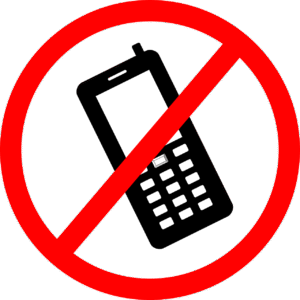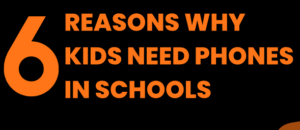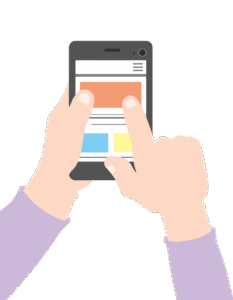Technology Helps, But Not for Everyone
This week, I had the opportunity to debate the topic: Has technology led to a more equitable society? I didn’t feel particularly strong about either side at first, so being assigned the remaining position turned out to be a blessing in disguise as it pushed me to dig deep, do my research, and build a solid case from the ground up.
At first glance, I instinctively thought, Of course it has! Technology has made huge strides over the years, and many of those changes have been for the better. There are countless apps, tools, and platforms available to support people in every area of life, especially in education. Students now have access to apps for nearly anything they want to learn or do.
One point the pro side made was that technology acts as a gateway, even if access isn’t equal, really stuck with me. It’s true that not everyone has the same access, but having some access is still better than none. They also argued that comparing access across divisions, cultures, or rural and urban settings doesn’t always make sense because those differences are already built in. I appreciated their perspective, especially their point about how technology allows for global collaboration across cultures and communities, which was supported by the following article.
That said, I do think there are certain comparisons that should be made, like urban to urban or rural to rural. Communities in similar settings should have similar levels of access, but that’s not always the case. Indigenous communities, for example, often still face significant digital barriers. The article from the Assembly of First Nations highlights how many communities lack the basic infrastructure for high-speed internet. It’s frustrating to see such a deep digital divide still exist within our own country. Jill’s video further emphasized this reality and showed just how many people are still being left behind.

Photo by flutie8211 on Pixabay
So, while I agree that technology has made society more equitable in certain ways, there’s still a long way to go. Personally, I find myself leaning more toward the disagree side mainly because so many groups continue to be overlooked in this digital transformation.
Kudos to the pro side for presenting such thoughtful arguments and challenging my thinking throughout the debate!
Old School vs. New Tools: Why Both Still Matter
The debate about whether schools should continue teaching skills that can easily be done by technology was a tough one. It felt like both sides were actually advocating for a similar goal, just from different angles. Neither side was pushing to eliminate cursive writing, multiplication tables, or spelling entirely, but rather to move away from rote memorization of these skills. With technology becoming more integrated into classrooms, I understand the value in shifting our approach, since students may not need the same type of instruction as before. Still, I strongly believe these foundational skills play an important role in students’ development throughout their education.
The pro side made strong points: these traditional skills support reading and writing development (which is confirmed in the following article), are part of the human experience, and relying solely on technology could create inequities for students who lack access. I agree with these arguments, especially since I see the benefits of writing by hand every day in my own teaching. Like I mentioned during the debate, writing helps me focus and retain information because it’s a personal, active process. Of course, not everyone learns the same way, which is where challenges can arise.
The opposing side also raised thoughtful points that made me reflect. They highlighted how students who struggle with traditional methods can build discipline through coding, music, and creative outlets, which I absolutely love. They also encouraged us to consider the future and to be brave enough to let go of outdated tools when they no longer serve students’ needs. As someone who often falls into familiar routines, this was a great reminder to be open to change. I appreciated the article they shared from “My Cursive”. It outlined both the pros and cons of cursive writing, showing that there isn’t a clear right or wrong answer, just valid arguments on both sides. I also found this short video which describes the clash between tradition and modernity in education. Even though people are trying to keep cursive writing in schools because they care about history and reading skills, technology and new ways of learning are making cursive less important in today’s classrooms.

Photo by cocoparisienne on Pixabay
In the end, I do see value in teaching spelling, cursive, and multiplication, but in moderation. I don’t think technology should replace these skills entirely, but I also believe we need to be mindful of how much time we spend on them, especially if they’re not helping students in meaningful ways. With so many learning styles in one classroom, we need a balanced approach. Combining technology with traditional tools can help us reach more students and support diverse ways of learning.
Great work debaters!
Rethinking Cell Phone Use in Education
After the government banned cell phones in schools this past year, I’ve now had a full year to experience a “cell phone–free” classroom. The school I’m currently at didn’t have major issues with phones to begin with, so the shift didn’t make a dramatic difference in terms of behavior. However, I did feel the impact was in their potential use for educational purposes.
The recent class debate on this topic raised compelling points on both sides. In the end, though, I personally believe that elementary and middle years students should be allowed to have phones in the classroom with clear boundaries and consistent rules in place.
The pro-ban side emphasized five main arguments: phones are designed to capture attention, they harm student well-being, teachers shouldn’t have to be “phone police,” teens struggle with self-regulation, and phones are a major source of distraction. The one article they shared from the National Center for Education Statistics confirms these points with a lot of interesting facts and data driven information. I’m actually shocked that more than 50% of school leaders agree that cell phones in the classroom hurt academic performance.
To be honest, I fully agree with all of these concerns. Still, I believe many of them, though not all, can be addressed through proper classroom management. Establishing rules and routines is a key part of setting up a classroom in the first few weeks of school. When I worked at a previous school where students were permitted to have phones, we implemented a simple routine: phones were placed in a drawer upon entering the classroom. Of course, there was some resistance at first, but consistency and teacher follow-through helped build a routine that worked. I understand this isn’t feasible for every classroom or every teacher, especially if the teacher struggles with managing their own device use, but banning phones entirely feels like punishing everyone for the actions of a few.
6 Reasons Why Kids Need Phones in Schools
My main concern with the ban was less about misuse and more about losing access to a valuable classroom tool (but the 6 Reasons Why was an interesting read from a parents’ perspective). Phones could be useful for assignments and projects, especially when it came to taking photos or videos for presentations. While it was never a requirement for students to use their phones, it was helpful to have them as a backup option when computers were unavailable, or the Wi-Fi wasn’t working. That flexibility is something I genuinely miss.
Ultimately, the decision around phone use is out of our hands as educators. And yes, we’ve managed just fine this past year without them, though at times it’s required more creativity and flexibility. Still, I wonder: if students aren’t taught now, at a young age, how to manage their phones responsibly, when to use them, how they can be used for learning, then when will they learn? In my opinion, teaching responsible use is part of preparing them for the real world.
Great work by all the debaters this week! Enjoy your evening 🙂
My Take on AI in Education
This debate topic was a tough one for me to vote on. As I listened to both sides, I found myself agreeing with each of their arguments. There really wasn’t a clear right or wrong as both sides presented valid points, which made the decision even more challenging. Kudos to the debaters; it was a thoughtful and engaging topic.
One quote from the “for” side really stood out to me: “If you’re pro-technology, you’re pro-AI, as it’s used in all apps.” That couldn’t be more accurate. AI is integrated into so many aspects of our daily lives, often without us even realizing it. From unlocking our phones with face or fingerprint recognition to the curated content and ads we see on social media, AI is present. Even GPS navigation relies on AI to improve routes in real time. It’s everywhere, and because of that, it makes sense to begin integrating it meaningfully into education because at this point, there’s no turning back. Is it being overused? Absolutely. And that’s where the risk lies. But too much of anything can become a problem.
The article “Can AI Transform Education to Ensure All Students Benefit?” highlights many ways AI can support teachers, and while I do use a variety of apps for planning, editing, and creating, I often find that the final product doesn’t quite meet my expectations. Sometimes it takes more time to tweak AI-generated content than to simply do it myself. That said, I do find AI tools incredibly helpful for brainstorming ideas especially when I’m stuck. But when I already know exactly what I want, I’m usually the only one who can execute it the way I envision.
For students, I see both pros and cons. Critical thinking hasn’t disappeared, but students now have more tools to assist them. As educators, it’s our responsibility to guide them in how to use AI tools, especially ones like ChatGPT, responsibly and effectively. We know they’re going to use them regardless, so teaching them to do so in meaningful and ethical ways is only going to help them in the long run.
Interestingly, I was just listening to JACK 94.5 FM where someone shared an experience at a store. The young cashier struggled to make change from a cash transaction and needed guidance to figure it out. The blame was placed on the education system for not giving students enough real-world experience in basic tasks. It’s a small, but very real example of how over-reliance on technology can weaken foundational skills. The following article talks about the “Erosion of Fundamental Skills” and tools like calculators and smartphones can sometimes do more harm than good by reducing opportunities for critical thinking and mental math.
My post today is all over the place, so I apologize for that! In the end, I’m not sure if AI will revolutionize education, but I do believe it’s here to stay. So as educators, it’s important we find balanced and intentional ways to use it to our advantage without letting it replace the human skills that truly matter.
Tech Helps-But It’s Not the Whole Lesson
As a middle years teacher, I don’t think my opinion on this topic will change anytime soon. I believe the use of technology in the classroom is both important and relevant, especially given the expectations placed on us by the division. Like I mentioned during the debate, it’s not just about using tech, it’s about how, why, and when we use it. I don’t think technology needs to be used every day or in every scenario, but it does open up a lot of possibilities for teaching and learning.
In my initial post, I mentioned tools like IXL, EDSBY, Word, OneNote, Teams, PowerPoint, Canva, Sway, and others. These can be used meaningfully in day-to-day teaching. Tech helps speed up lessons (when Wi-Fi is working) and often makes things more efficient than traditional pencil-and-paper tasks.
That said, I also see the flip side. Some teachers lean too heavily on technology, using it more to keep students occupied than for true learning. I get it, teaching today comes with big challenges: larger class sizes, mixed grades, and a wider range of student needs. Technology is convenient because it allows students to work at their own pace and keeps them engaged. The following images taken from the pro side of the debate’s article list just goes to show why teachers try and utilize technology as much as possible.
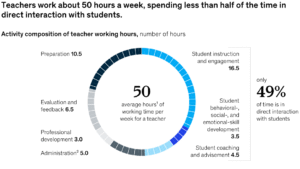
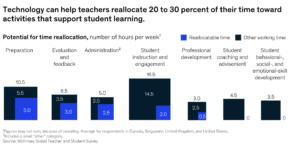
But I do wonder about fairness and consistency. Some students have ROAs that require the use of technology all the time, which helps them access the curriculum, but is it also holding them back from developing basic skills like printing, drawing, or writing by hand?
Sure, those things can now be done digitally too, but will students still develop the fine motor skills they may need later in life? Or is that no longer as relevant in today’s world?
From a parent’s perspective, I’ve seen the impact both ways. My child once had a teacher who didn’t “believe in” using computers, so even though his ROA required it, he rarely got the access he needed. That year was a real struggle. Tools like Word, the calculator app, and Google Translate made a huge difference in helping him learn and stay engaged. Without access to those, he was lost. In previous years, having access to a computer when needed helped him stay on track and fully engage, especially as he was learning a second language.
Still, one of the strongest points from the opposing side was about how distracting technology can be, and I totally agree. I see it every day. Even with close monitoring, it’s nearly impossible to catch everything. Students can be off-task so quickly playing games, chatting on Teams, or browsing off-topic sites. Yes, I can check in and monitor their activity, but let’s be honest, who has the time to do that constantly with 30+ students? The author of this article states that students “need to learn more effective self-control techniques to keep them focused on the learning at hand.” I agree with the point, but it’s just one more thing teachers are expected to teach even though there’s already not enough time in the day as it is.
At the end of the day, I believe technology really does enhance learning, but it has to be used alongside traditional tools like paper and pen. Too much of anything isn’t good. Like most things in education, it comes down to balance. Moderation, flexibility, and thoughtful planning are key to making tech work with us, not against us.
‘Blended learning’ brings computers into classrooms
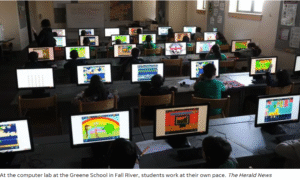
Have a great evening everyone!
Not Worse, Just Different: Tech, Kids, and Changing Times
The debate on “School is ruining childhood” really got me thinking. Before the debate, I was convinced that it was ruining childhood and that kids weren’t using it the way it was intended. But after hearing both sides, I found myself rethinking that stance. In fact, I probably should’ve been arguing against that idea myself as my own son uses technology in so many positive ways to stay engaged and socialize. Apps like Snapchat, Instagram, Discord, TikTok, YouTube, and Roblox have helped him stay connected, especially with his social anxiety. When looking at the article the against side shared titled “Social Media Benefits”, the points made were well-supported, and I could relate to many of them based on what I’ve experienced with my son too.
That said, the issue isn’t the technology itself, it’s the amount of time spent on it and the addictive nature of constant screen use. One point the pro team made was that social media isolates kids more than it connects them. I can see that in some cases, but for my son, it’s actually helped him build and maintain relationships. The flip side is that it can also reinforce his anxiety about face-to-face interactions, since there’s no pressure to go out when you can connect with people from your room 24/7.
I really appreciated the point the against team made about how the idea of a “perfect childhood” is always changing. It made me think of that meme where our parents thought we were vs. where we actually were. Haha.
 Good old days : r/Memes_Of_The_Dank
Good old days : r/Memes_Of_The_Dank
We all (or maybe just me) did things we weren’t proud of, and bad people were around back then too, but they didn’t have the same level of access to kids. There were no phones to take pictures and videos of behaviours etc. I remember using online chatrooms as a joke with friends, but looking back now, it’s scary to think about who we were actually talking to.
As a parent, I feel like it’s our responsibility to monitor and guide our kids online. It’s tempting to say, “just don’t let them have phones or tablets,” but would that actually help them in the long run? Tech isn’t going away and teaching them how to navigate it safely seems more realistic and helpful. Like the against team said, every generation of parents has had something to fear, rock music, video games, now social media. Sure, we all made questionable choices growing up, but maybe those experiences made us more aware today.
In the end, I don’t think social media is ruining childhood. If anything, it’s the lack of boundaries and guidance from us as adults that plays a bigger role. The article with Becky’s Parenting Tips that the pro side shared with us would agree. Finding that balance is the real challenge.
Have a great day!
My Daily Reality: Tech in the Classroom
It’s hard to imagine life without technology. In my everyday school life, it would be nearly impossible to function without it so when the Wi-Fi isn’t working, the struggle is real! It really makes you wonder how teachers ever got by without the tech tools we now rely on.
This year, I finally said goodbye to my paper day plan and switched to Chalk, and I love it. It’s easy to use and saves automatically… what more could you ask for? Another frequently used app in our division is Clever, which acts as a hub for many other programs and makes logging in much easier. Students also have access to their own accounts, which opens the door to a wide range of interactive online tools. Below are some of my favourites (some mandatory), but there are many more!
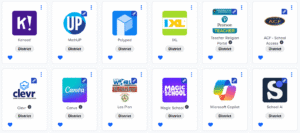
Students are regularly on their computers, and for good reason. A few apps that they use almost daily include:
- OneNote for class content and organization
- IXL and Esti Mysteries for extra math practice
- Word, PowerPoint, and Canva for assignments
- Kahoot when we want to have a little fun as a class
What I love about these tools is how collaborative they can be. Whether students are working in pairs or groups, or I’m actively participating and monitoring their progress most of these apps offer an interactive element. I actually find that students are more motivated when they know I can follow their work in real time. With larger class sizes, it’s a huge bonus to be able to monitor everyone at once, rather than just a few students at a time.
Of course, there are countless other apps out there I haven’t even explored yet. But the point I’m trying to make is that we’ve come to rely on technology so heavily in the classroom that it’s hard to imagine going back. These tools are more than just helpful, they’re essential. Technology allows us not only to connect within the classroom, but with anyone, anywhere.
As I sit here reflecting on what I just wrote, I’m actually kind of impressed by how much technology is a part of my day. And yet… I still can’t figure out how to get Stock Images to work on my blog.
Have a great evening, everyone!
Danielle



